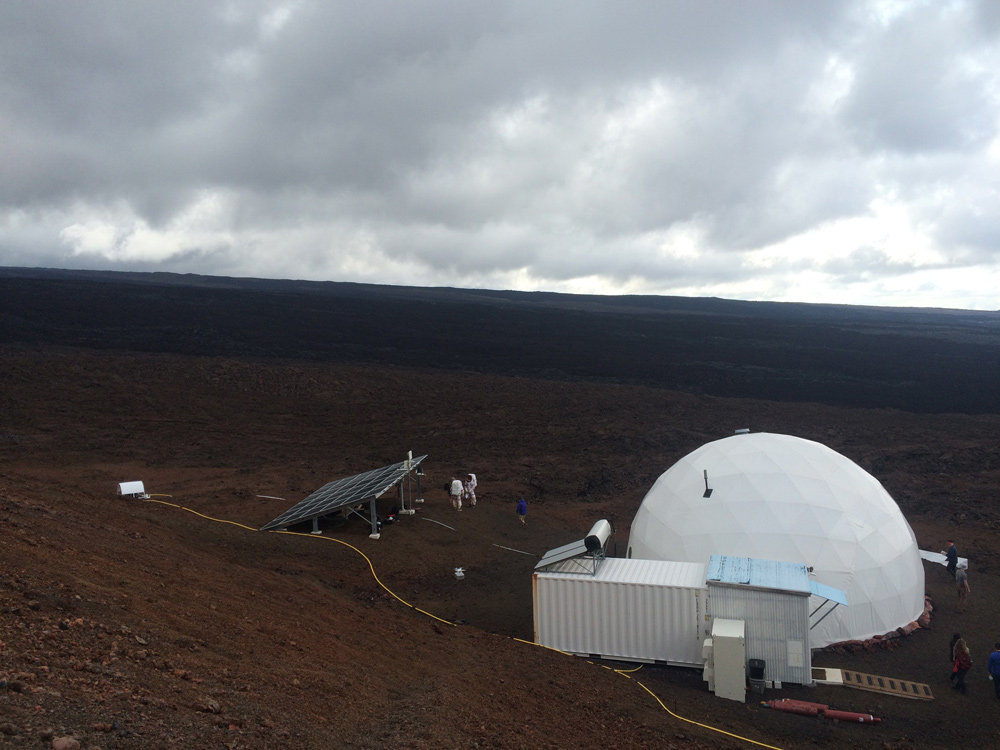'Astronauts' Start 8-Month Mars Simulation in Hawaii

Another long-term space simulation is underway at the Mauna Loa volcano in Hawaii, where six crewmembers entered a small, isolated dome Jan. 19 as a part of the HI-SEAS mission.
This is the fifth iteration of HI-SEAS, also known as the Hawai'i Space Exploration Analog and Simulation. NASA is funding this mission and a sixth mission, scheduled for 2018, for $1 million.
For the next eight months, crewmembers will simulate a mission on a planetary surface similar to Mars'. The simulation will include a 20-minute delay in communication, because it takes time to send messages at light speed from Earth to Mars, and they will have limited contact with the outside world — in previous missions, water was delivered every six weeks and supply "missions" every few months.
The crew will also be expected to follow many protocols simulating life in space. Their routines will include eating food from shelf-stable ingredients, performing scientific research, doing daily exercise, maintaining equipment and tracking use of food, power and water. They'll have to put on spacesuits to leave the dome.
Hawaii's Mauna Loa provides the perfect environment for such a simulation, mission team members said.
"This is the best and most obvious place to do this research, both because of the physicality — as you can see, it looks like we're on Mars — but also because of the range of expertise available at the University of Hawaii," Kim Binsted, HI-SEAS principal investigator and a professor at the University of Hawaii at Manoa, said in a statement.
HI-SEAS' fourth iteration finished a one-year mission last year, putting the program in a small group of space analogs that have kept crews in isolation for that long. Other examples include the European Space Agency's Mars500 mission and the Concordia Research Station in Antarctica.
Breaking space news, the latest updates on rocket launches, skywatching events and more!
Coincidentally, NASA astronaut Scott Kelly and Russian cosmonaut Mikhail Kornienko also finished a nearly one-year mission in space in March 2016, joining just a handful of astronauts who have stayed in space consecutively for 300 days or longer. A typical space station mission is five or six months long.
Follow Elizabeth Howell @howellspace, or Space.com @Spacedotcom. We're also on Facebook and Google+. Original article on Space.com.

Elizabeth Howell (she/her), Ph.D., was a staff writer in the spaceflight channel between 2022 and 2024 specializing in Canadian space news. She was contributing writer for Space.com for 10 years from 2012 to 2024. Elizabeth's reporting includes multiple exclusives with the White House, leading world coverage about a lost-and-found space tomato on the International Space Station, witnessing five human spaceflight launches on two continents, flying parabolic, working inside a spacesuit, and participating in a simulated Mars mission. Her latest book, "Why Am I Taller?" (ECW Press, 2022) is co-written with astronaut Dave Williams.
